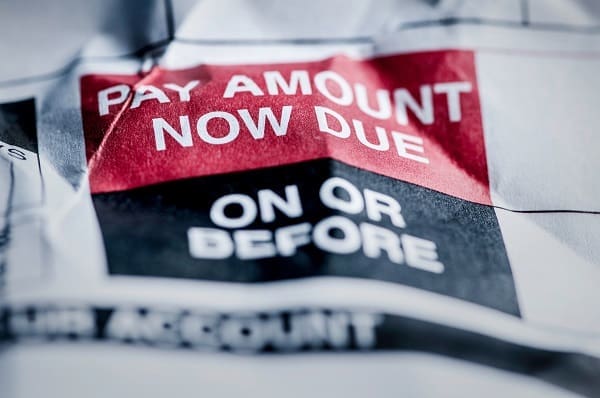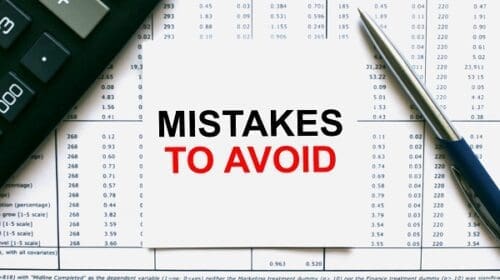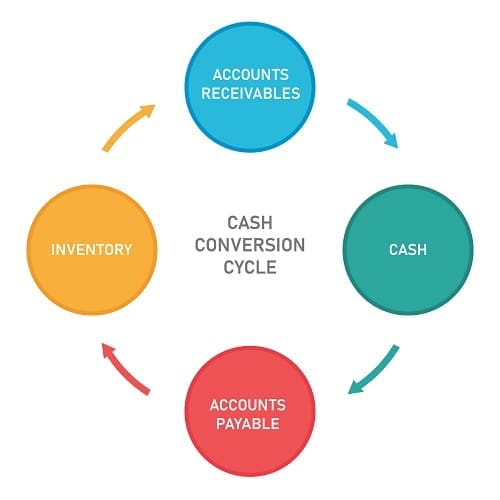
Hiring a CPA may not be as easy as you think. Over 300,000 accountants and auditors have left their jobs in the past couple of years, SHRM reports. This mass exodus from the field, paired with increasing demand, means it can be challenging to find a qualified professional to begin with. In addition, each CPA brings something different to the table. It’s essential to find the right professional for your needs. On this page, we’ll walk you through the basics of what a CPA can do for your business, why you might need one, and how to ensure the one you select can be truly instrumental in your business growth.
What’s a CPA?
Technically, just about anyone can be an accountant or work as an accounting professional. Although most have degrees in accounting, there are few requirements to provide accounting services.
On the other hand, CPA is short for Certified Public Accountant. This designation is awarded to someone who has gone the extra mile and become licensed. Each state has different rules, though additional schooling and study in areas like auditing, taxation, and cost accounting, as well as passing a CPA exam, are typical requirements. CPAs are usually expected to engage in continuing education programs and meet additional requirements to maintain their licenses, too.
CPA vs. Bookkeeper
Sometimes, “bookkeeper” and “CPA” are used interchangeably, but they’re different types of professionals.
Bookkeepers generally manage the day-to-day financial transactions of a business. This includes things like recording transactions, posting debits and credits, generating invoices, managing payroll, and maintaining and balancing ledgers and accounts.
CPAs, on the other hand, can handle more complex tasks such as tax planning and filing, financial forecasting, and providing strategic business advice. CPAs can also represent a business in IRS dealings, which is typically beyond the scope of what a bookkeeper can do.
Signs Your Business Should Consider Hiring a CPA
You may not need a CPA while your business is small. However, as it grows and financial matters become more complex, hiring a CPA becomes vital. Below, we’ll cover a few signs your business is at this stage.
- You’re dealing with complex tax situations.
- Your business is expanding.
- You have auditing needs.
- You require assistance with financial planning and analysis.
- You’re dealing with complex financial transactions, such as mergers and acquisitions.
- You have concerns about regulatory compliance.
- You want representation during an IRS audit.
- You need to start delegating tasks so you can focus on business operations more.
The Benefits of Hiring a CPA for Your Small Business
For a small business owner, hiring a CPA brings advantages that extend far beyond routine tax filing. A CPA’s in-depth knowledge of tax laws and regulations can help your business remain compliant while identifying legitimate deductions and tax benefits you may otherwise overlook. The cost of hiring a CPA is often offset by the long-term financial savings and strategic insight they offer.
Unlike basic tax software or a generic tax preparer, a CPA brings a broader perspective that supports year-round financial planning, not just seasonal tax return preparation. Their role in bookkeeping, understanding your business structure, and interpreting complex financial records can help reduce risk and improve decision-making.
If your business has multiple income streams, handles personal taxes alongside business tax, or operates in a regulated industry, you may need a certified public accountant to stay ahead of changing tax code requirements. The benefits of hiring a CPA include professional guidance, improved tax compliance, and peace of mind — all crucial as you’re growing your business or managing its day-to-day demands.
8 Essential Considerations When Hiring a CPA
Now that we’ve covered the background, let’s dig into what to look for when hiring a CPA.
1. Qualifications and Certifications
The first step in vetting a CPA is to review their qualifications and certifications.
CPA Licensure
Confirm the professional you’re considering working with has a CPA license in the state in which your business operates. This proves they’ve passed the CPA test, understand complex accounting principles, and are familiar with ethical standards. Many states offer online portals that make it easy to verify these credentials.
Education
While CPAs are all required to take accounting-specific classes, degrees may differ. Moreover, a bachelor’s degree is usually the minimum requirement, and many go beyond this to secure a master’s degree in accounting, business administration, or taxation. If you’re dealing with a specific concern, working with someone with additional expertise in that area may be advantageous.
Specializations and Certifications
Beyond the CPA licensure, many accountants pursue additional certifications that denote expertise in specific areas.
- Certified Management Accountant (CMA) for expertise in financial management and strategy.
- Certified Information Systems Auditor (CISA) for those focusing on information systems audits and controls.
- Certified Financial Planner (CFP) for expertise in personal financial planning.
- Accredited in Business Valuation (AVB), Certified in Financial Forensics (CFF), or Chartered Global Management Accountant (CGMA) for specialized skills in valuation, forensics, or global business finance.
Professional Memberships
Memberships in professional organizations such as the American Institute of CPAs (AICPA), or state CPA societies can indicate the individual is committed to the profession and adherence to its ethical standards.
2. Experience and Expertise
Experience in your specific industry is invaluable. Different industries have unique accounting standards, tax implications, and financial challenges. For example, a CPA with a background in manufacturing will be familiar with cost accounting and inventory management practices specific to the industry. At the same time, one with expertise in technology startups might have more experience with venture capital financing and revenue recognition for software sales.
3. Services Offered
A good CPA can be a strong partner for your business for years to come. Because of this, you’ll want to think about your short-term and long-term objectives and ensure the services offered by any CPA you’re considering align with them. We’ll go over a few examples below.
Comprehensive Tax Services
Beyond basic tax preparation, a CPA offering complex tax services such as planning, consulting, and IRS representation can be a critical asset. This is especially vital if you’re dealing with a complex tax situation, trying to minimize liabilities or need guidance on tax-efficient strategies.
Auditing and Assurance Services
If your business requires auditing services, whether for internal purposes, compliance, or external investor relations, selecting a CPA with expertise in these areas is crucial. Assurance services add credibility to your business’s financial statements, which is essential for stakeholder confidence.
Accounting and Financial Reporting
A CPA that offers accounting and financial reporting services can help you ensure accuracy in your financial statements, comply with accounting standards, and provide insights for decision-making through financial analysis.
Business Advisory and Consulting
CPAs providing business advisory services can assist in areas such as business planning, financial forecasting, risk management, and even succession planning. This expertise is invaluable if your business is trying to grow, pivot, or navigate a transition.
Specialized Services
Depending on your specific challenges and goals, you may prefer hiring a CPA with specialized services, such as international taxation or forensic accounting, who can offer targeted solutions and expertise.
Integration with Business Operations
It is crucial to consider how well the CPA’s services can be integrated into the existing business operations. A CPA who is adaptable and capable of working with your current systems and processes can provide seamless support and more effective collaboration.
4. Soft Skills
Communication skills, problem-solving abilities, and attention to detail are essential. The CPA will be working closely with your team, analyzing financial data, and providing strategic financial advice. Therefore, they must be able to communicate complex information clearly and work effectively under pressure.
5. Reputation and References
Ask for references from previous clients, especially those in similar industries or those with similar needs to your own. This can provide insights into the CPA’s work ethic, reliability, and quality of their service.
6. Technological Proficiency
Given the rapid evolution of accounting software and financial technologies, a CPA’s proficiency with the latest tools and platforms can significantly enhance efficiency and data accuracy. Look for a CPA who is knowledgeable in the accounting and financial management software your business uses or skilled with advanced data analysis and forecasting tools.
7. Availability and Accessibility
It’s essential to have a mutual understanding of when and how the CPA will be available under different circumstances. For instance, you may be able to schedule regular financial reviews without issue, but what happens if you receive a large, unexpected order that requires quick financial assessment and decision-making? Or, what if your business experiences an emergency? Will you be able to reach them easily and in a manner that works for you both? What about connecting during tax times or other critical financial periods?
Be sure you’re on the same page with your CPA regarding how situations like these will be handled and ask if they offer any guarantees about the level of service you’ll receive.
8. Fees and Pricing Structure
Understanding the fees and pricing structure of a CPA’s services is crucial for transparency and aligning financial planning with the cost of services. A few areas to consider in this regard are outlined below.
Hourly Rates vs. Fixed Fees
CPAs may charge by the hour or offer fixed-fee arrangements for specific services. Hourly rates are typical for consulting or advisory services where the scope of work might vary. Fixed fees are often applied to well-defined tasks such as annual tax preparation.
Retainer Basis
Some CPAs offer their services on a retainer basis. Where the business pays a regular, predetermined fee for ongoing services. This arrangement can be beneficial if your business requires continuous access to CPA services, as it makes costs more predictable and ensures the CPA will be available.
Value-Based Pricing
In some cases, CPAs may offer value-based pricing for services that provide significant value or savings to the business, such as tax planning strategies that significantly reduce your tax liability. In these cases, the fee is based on the value derived rather than the time spent.
Additional Fees
Be aware of any additional fees that may apply, such as charges for rush services, extra for complex transactions, or fees for using specific technologies or software. Understanding all potential fees upfront can help avoid unexpected costs.
Comparison and Negotiation
It’s worthwhile to compare fee structures and services offered by different CPAs. Discuss the fees with the CPA, especially if you need clarification or want to negotiate terms that fit your company’s budget and needs better.
Strengthen Your Financial Management Strategy with Invoice Factoring
While hiring a CPA can help you understand your finances better and leverage capital in a way that aligns with your business objectives, this is only one component of a cohesive financial management strategy. All businesses need working capital from time to time, and demand increases during periods of high growth. That’s where invoice factoring comes in. It accelerates payment on your B2B invoices, so you get the capital you need right away without taking on debt. To learn more or get started, request a complimentary rate quote.




 Wondering if it’s time to hire a collection agency? We often think of collection agencies in terms of the consumer market. For example, retail stores and credit card companies often hire a collection agency when their customers don’t pay their bills. However, professional debt collectors also work on behalf of B2B companies, such as transportation companies, manufacturers, accounting firms, and other professional service providers. So, if your business is plagued with delinquent accounts, it might be time for you to bring in a professional too.
Wondering if it’s time to hire a collection agency? We often think of collection agencies in terms of the consumer market. For example, retail stores and credit card companies often hire a collection agency when their customers don’t pay their bills. However, professional debt collectors also work on behalf of B2B companies, such as transportation companies, manufacturers, accounting firms, and other professional service providers. So, if your business is plagued with delinquent accounts, it might be time for you to bring in a professional too.




